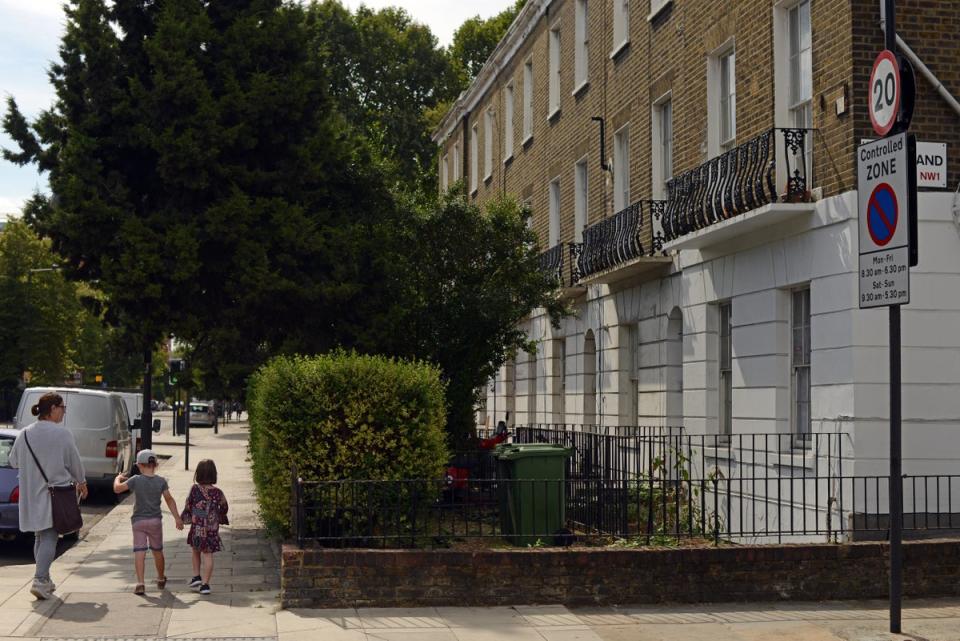Recession-busting areas: Where are the five best places to buy a home in London in 2023?

The OBR has said house prices will fall nine per cent over the next two years as mortgage interest rates rise.
But house prices never behave uniformly throughout the country, with various factors at play influencing how desirable regions and, on a more granular level, neighbourhoods, remain through hard times.
Even when the property market is booming, it does not boom equally in all areas — witness the desertion of central London during the pandemic, usually deemed an entirely safe bet.
Richmond
Average house price: £1,149,660
Ten-year price growth: 65%
Source: Hamptons
With its proximity to a deer-filled park and one of the leafier stretches of the River Thames, Richmond was last year voted the happiest part of the capital.
Marcus Dixon, director of research at property specialist JLL says house prices in the area, where famous residents have included Sirs David Attenborough and Mick Jagger, Brad Pitt and Angelina Jolie, are set to hold up better than elsewhere through the recession for two main reasons.
First, more than half of owner-occupied homes are owned outright, meaning Richmond is less vulnerable to rising interest rates than mortgage-dependent areas.
Second, a prevalence of larger houses makes the area attractive to expanding households. “Whatever the state of the economy, families grow and requirements change,” he explains.
House prices in the area have risen 14 per cent in the last year, according to Hamptons.
Camden
Average house price: £1,173,210
Ten-year price growth: 51%
Source: Hamptons
As well as its eclectic shops and bars, Camden boasts a strong claim as a place to see out the forthcoming recession. Mortgage lender Proportunity has crunched the data and identified the north London neighbourhood — where house prices have dropped three per cent in a year but have risen eight per cent since 2017 — as a candidate for holding its property values.
“Areas with larger and older homes generally tend to do well in harder times,” says Proportunity research lead Sree Balan.
He adds that Camden is close to natural spaces such as Regent’s Park and Regent’s Canal while boasting strong Tube, Overground and bus connections to central London.
The area’s lockside area and markets, as well as its rich musical history, mean it remains a tourist hotspot, adding another feather to its cap in hard times.
Whitechapel
Average house price: £576,790
Ten-year price growth: 78%
Source: Hamptons
With very high levels of social housing, the east London borough of Tower Hamlets is a wildcard for a recession-proof purchase.
“Areas with lots of mortgage-reliant owners, such as Wandsworth, are much more exposed to a recession than those with high levels of social housing,” points out Bartlett Real Estate Institute chair Yolande Barnes.
Indeed house prices across the Tower Hamlets borough soared by 10.3 per cent this year to an average of £486,564, according to latest figures from the Land Registry. The district is also renowned for education choice, with 91 per cent of children getting a place at a preferred secondary school in 2022. If you’re seeking a recession-proof bolt-hole, Whitechapel is a modern-day gem with an eponymous art gallery and a shiny new Elizabeth Line station whizzing residents into the City and West End in minutes.
Year-on-year price growth in Whitechapel (E1) is two per cent, according to Hamptons.
Knightsbridge
Average house price: £3,539,540
Ten-year price growth: 6%
Source: Hamptons
Featuring the likes of Harvey Nichols and Harrods along its well-heeled boulevards, Knightsbridge is unlikely to fear the cost-of-living crisis.
Indeed a rush of interest was seen in one £210m mega-mansion in the district after the disastrous mini-budget recently — because the slump in the pound favoured overseas buyers.
You’ll need deep pockets to take advantage — although the average house price in Knightsbridge is down one per cent in the past year, it still stands at £3.5 million according to Hamptons — but the signs are clear.
"Quality always sells,” says property expert and House Buy Fast founder Jonathan Rolande. “The looming financial downturn, in common with many others before it, looks set to hit the less-well-off hardest.”
Hackney
Average house price: £771,960
Ten-year price growth: 92%
Source: Hamptons
Leaving behind its next-cool-neighbourhood tag and eight-fold growth in residential property values in the 20 years to 1996, Hackney might have up and come, but the east London district is now earning its spurs as one of the best places to buy a house in the looming recession.
Its high levels of gentrification, strong links to central London and “broad selection of property types from refurbished buildings to newer builds” makes it a strong candidate for holding its values next year, according to Balan.
Estate agents Hamptons says house prices in Hackney are up 12 per cent this year to £771,960.

 Yahoo Finance
Yahoo Finance 